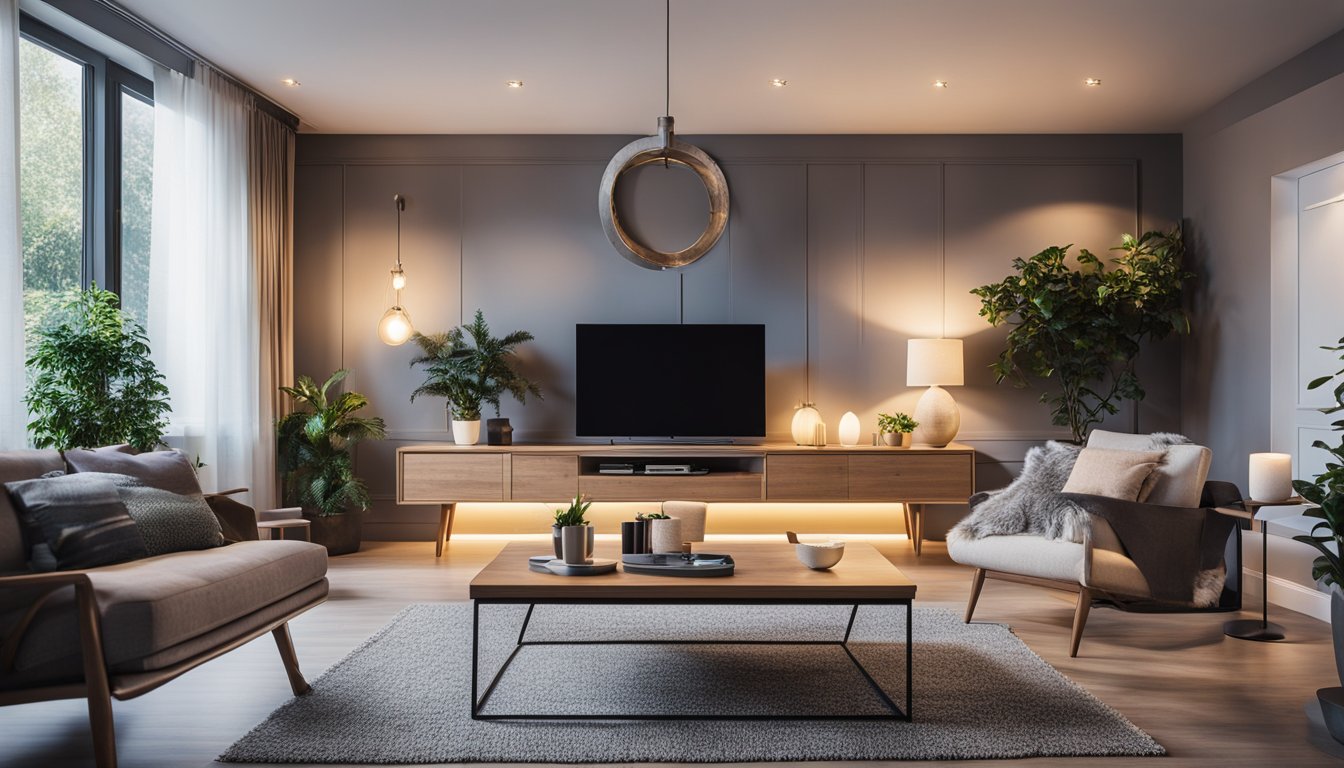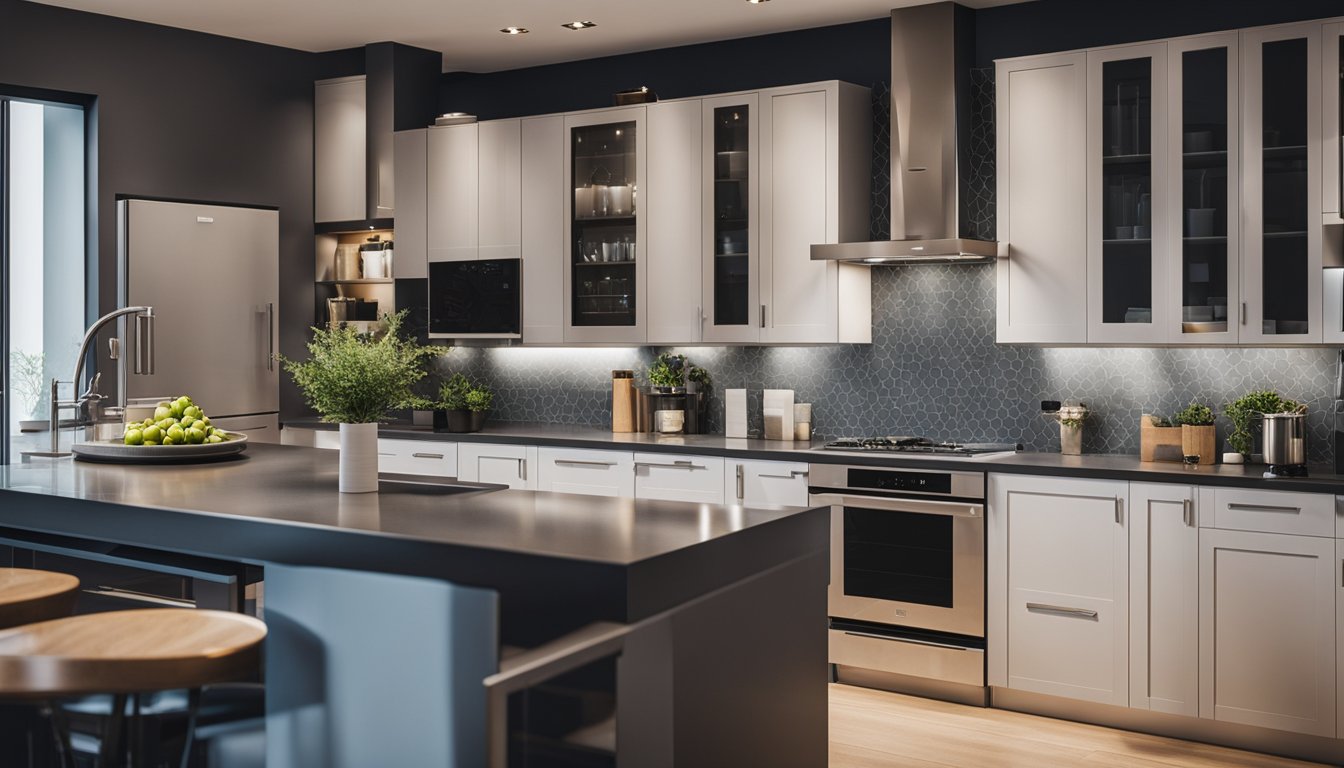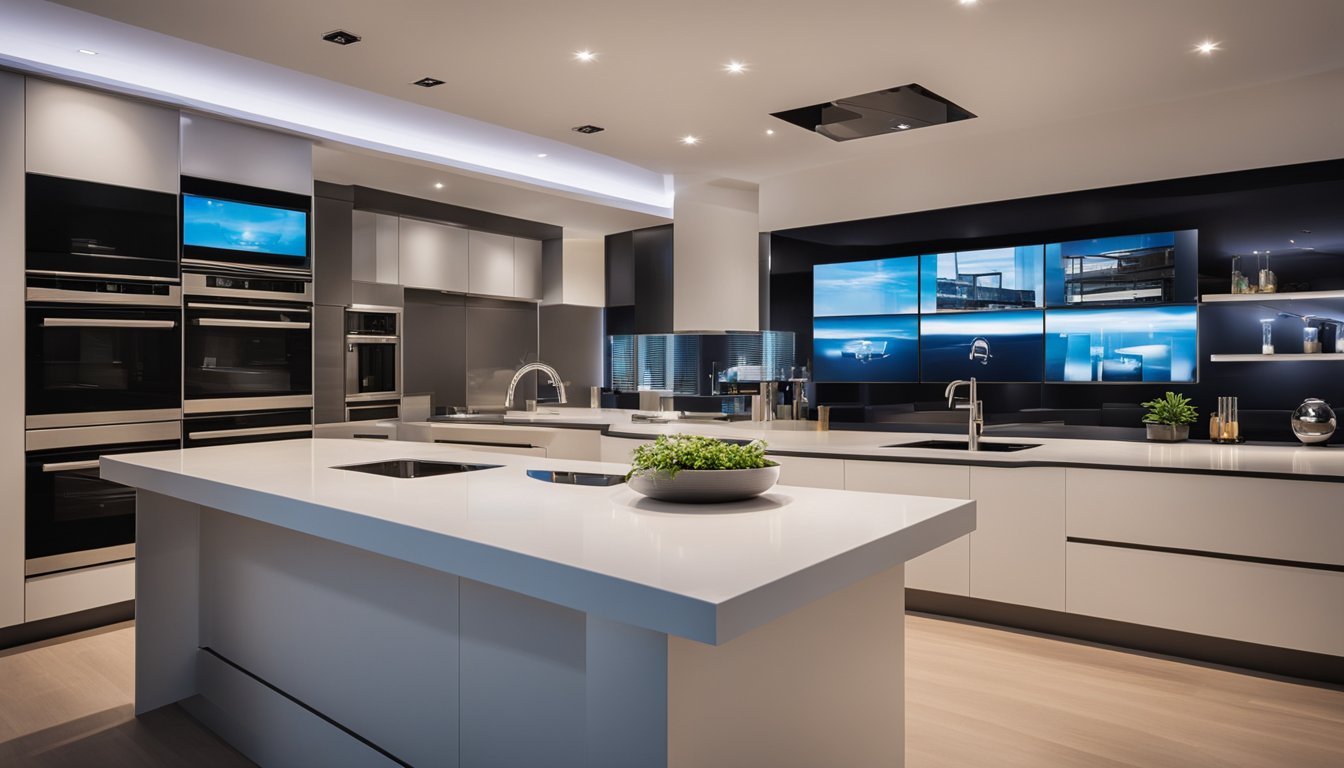Late updated: 20 Nov 2024 09:11
Written by: Eleanor Hartman
Home Automation Tips For UK Energy Efficiency: Smart Solutions for Savings
In today's rapidly changing world, the importance of energy efficiency in our homes has never been clearer. We're all looking for ways to not only reduce our carbon footprints but also save on energy bills. With the help of smart home technology, we can achieve significant energy savings while maintaining the comfort of our living spaces. From smart thermostats to advanced LED lighting, integrating technology into our daily routines allows us to optimise energy use effectively.

Utilising energy-efficient appliances is another crucial step in making our homes more sustainable. Smart appliances offer us better control and automation, ensuring that energy is used wisely without unnecessary wastage. This not only benefits the environment but also helps in cutting down our monthly costs. By enrolling in government-backed schemes and adhering to tips from the Energy Saving Trust, we can drive meaningful change towards a sustainable future.
Home automation plays a pivotal role in optimising heating and insulation, making it easier to maintain desired temperatures efficiently. Improved insulation combined with intelligent heating systems can lead to notable energy conservation. As we explore these technologies, it becomes essential to address common concerns and queries regarding their implementation and benefits.
Key Takeaways
- Smart home technology enhances energy efficiency.
- Energy-efficient appliances reduce costs and waste.
- Heating and insulation optimisation are vital for savings.
Optimising Heating and Insulation
To optimise energy efficiency in homes across the UK, it's essential to focus on smart heating management and proper insulation. Utilising smart controls can significantly reduce energy usage, while effective insulation prevents energy loss, keeping homes warm and reducing bills.
Managing Heating with Smart Controls
Smart controls are revolutionising how we manage home heating. Smart thermostats allow us to control heating remotely, adjusting to our schedules, which can greatly improve comfort and energy efficiency. Integrating a smart meter helps monitor real-time energy usage, making it easier to identify patterns and optimise heating settings.
Adjusting the boiler flow temperature, especially in combi boilers, ensures that the heating system runs efficiently without wasting energy. Lowering the flow temperature can significantly reduce energy consumption.
Radiator reflector panels can also help by directing heat back into the room, preventing it from escaping through walls. These combined technologies offer substantial savings on energy bills, enhancing overall comfort and sustainability.
The Importance of Proper Insulation
Proper insulation is critical for maintaining a home's energy efficiency. Insulation reduces the rate of heat loss, ensuring that the warm air stays inside during colder months, lowering the heating demand. Wall insulation is particularly important, as walls are a major source of heat loss.
Including draught-proofing around windows and doors can prevent cold air from seeping in and warm air from escaping, providing substantial savings on energy bills.
We must also pay attention to loft insulation, which can significantly impact overall energy efficiency. Insulating loft spaces effectively retains heat, reducing the burden on heating systems.
Insulation Types and Benefits
Understanding the types of insulation available can help us make informed decisions. Cavity wall insulation is one of the most effective methods for existing homes, filling gaps in walls to improve thermal performance significantly. This can reduce heat loss and bring down energy bills considerably.
Floor insulation is another option, essential in homes with older floor constructions. Proper floor insulation helps maintain warm temperatures in living spaces above. It's a straightforward measure that can lead to consistent energy savings.
These varied insulation types work together to create a comprehensive energy-efficient environment, optimising our homes for better performance and reduced costs.
Advancing Efficiency Through Smart Appliances and Lighting

Embracing smart appliances and LED lighting can significantly reduce energy consumption in our homes. By integrating intelligent systems, we optimise energy use, cutting costs and emissions.
Smart Appliances Impact on Energy Use
Smart appliances revolutionise how we manage our energy footprint. Smart washing machines and tumble dryers assess load sizes and adjust water and energy usage accordingly. By connecting to Wi-Fi, they schedule operations during off-peak energy times, saving money. Energy performance certificates guide us in choosing efficient models with high energy ratings.
Smart kettles and ovens, for instance, allow precise control via apps, reducing overuse. Standby mode should be minimised; smart systems can automatically power down inactive devices, reducing unnecessary consumption. These innovations collectively help households aim for net zero emissions, enhancing home improvements efficiently.
Enhancing Lighting with LED Technology
Switching to LED lighting is a cornerstone for energy savings. LED bulbs offer superior energy efficiency compared to traditional incandescent bulbs. They use a fraction of the energy and have a longer lifespan, which reduces the estimated cost of replacements.
Implementing smart lighting systems further enhances this efficiency. Automated systems use sensors to detect occupancy and adjust brightness, reducing wastage. Integrating them with our smart home setup allows scheduling and remote control, adding convenience alongside energy savings. This transition supports the UK’s efforts towards lower carbon emissions.
Behavioural Changes for Energy Conservation
While technology provides tools, behavioural adjustments are vital. Turning down radiators slightly can significantly impact heating bills and emissions. Simple habits like unplugging appliances and turning off lights contribute to conserving energy.
We should optimise our showers with energy-efficient shower heads, using less hot water. Conscious scheduling of appliance use, like washing clothes during off-peak hours, helps avoid high tariffs. Collectively, these actions, alongside smart home technology, create sustainable living conditions, aiding in energy conservation efforts.
Understanding these practices empowers us to make informed choices benefiting both our wallets and the planet.
Frequently Asked Questions

In UK homes, smart devices and thoughtful automation can significantly boost energy efficiency. From integrating thermostats like Hive to optimising lighting and insulation, technology offers various solutions to reduce energy consumption. Let's address some common questions on how this works.
What are the top smart home devices to enhance energy savings in UK households?
Smart thermostats, such as Hive, are pivotal. They allow precise temperature control and schedule heating patterns, reducing unnecessary energy use. Smart plugs and meters also help by monitoring and managing power consumption.
How does integrating a Hive Thermostat contribute to domestic energy efficiency in the UK?
Using a Hive Thermostat enables us to control our heating remotely, adjusting temperatures to meet our needs without wastage. By integrating smart schedules and automation, energy is conserved, bringing down utility bills while maintaining comfort.
What steps can homeowners take to reduce electricity usage in their UK residences?
Switching to LED bulbs significantly cuts energy use. Employing energy-efficient appliances with high ratings ensures less power consumption. Draught-proofing and regular maintenance of home systems help avoid energy loss.
In what ways does home automation contribute to the UK's energy efficiency objectives?
Smart home automation optimises power usage, aligning with national goals to reduce carbon emissions. Automated systems track consumption, making it easier for us to adapt and reduce energy use.
Can smart lighting solutions significantly lower energy consumption in UK homes?
Smart lighting like LED and automated controls lower energy usage by adjusting light levels and switching off when rooms are unoccupied. These solutions enhance efficiency and reduce electricity bills for us.
What role does insulation play in energy-efficient home automation upgrades?
Effective insulation retains heat, meaning less energy is required for heating. Paired with automation, it ensures environments remain consistently comfortable, further reducing overall energy consumption in UK homes.